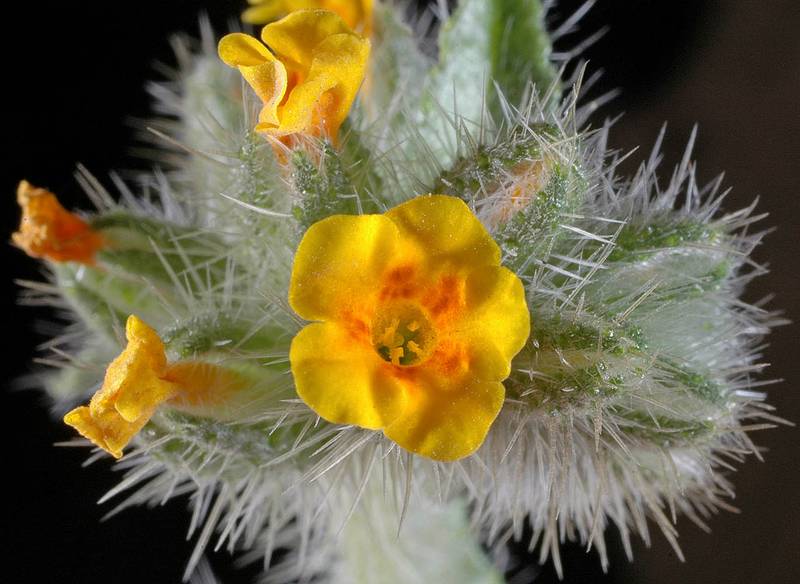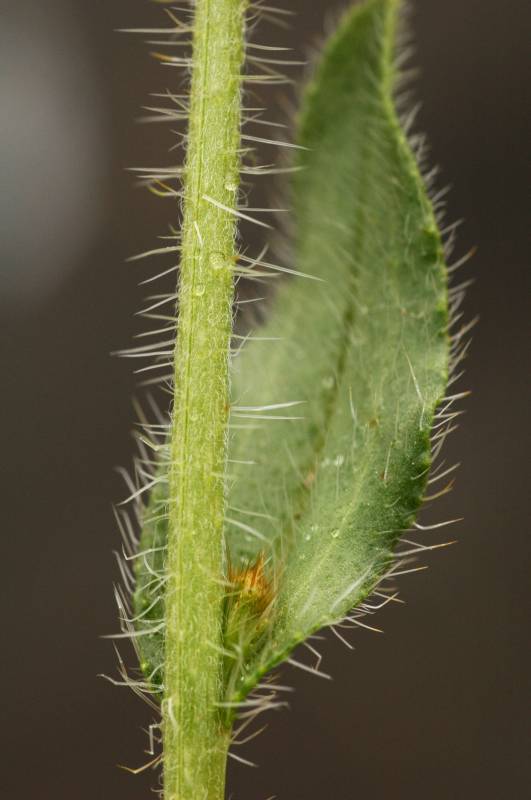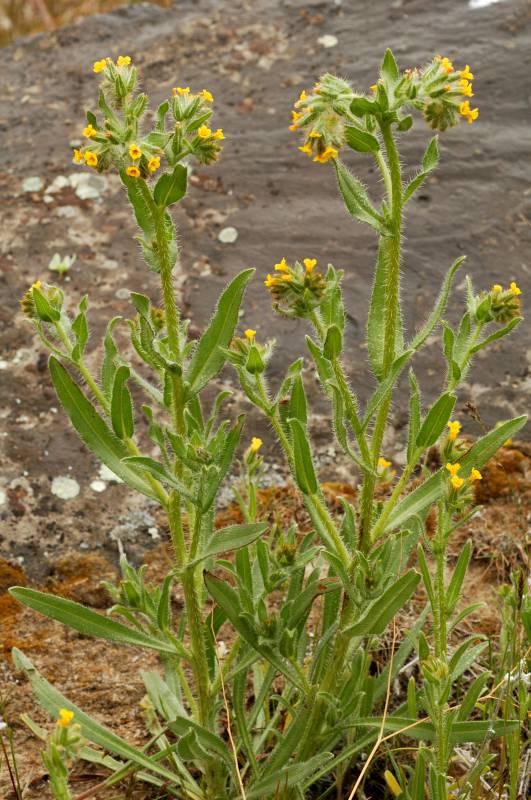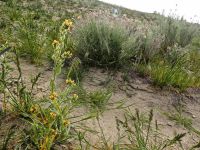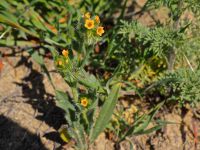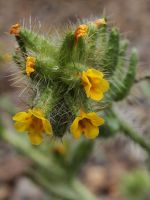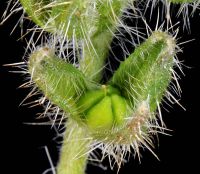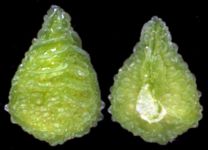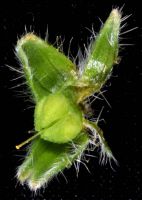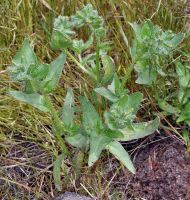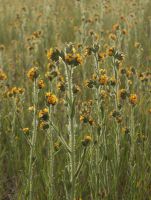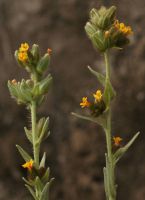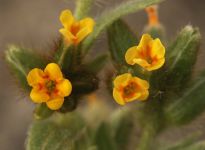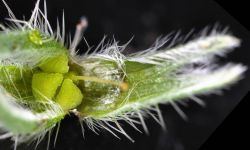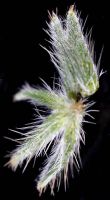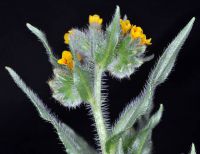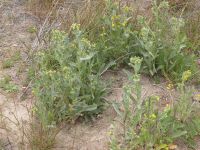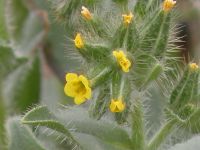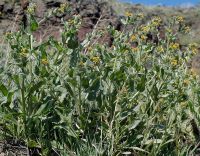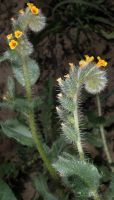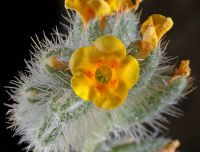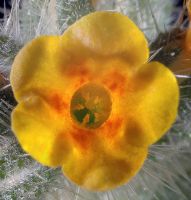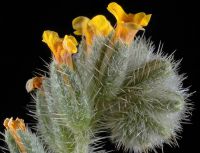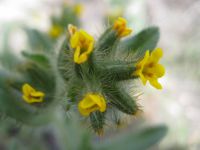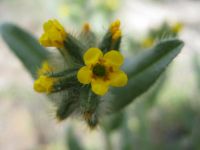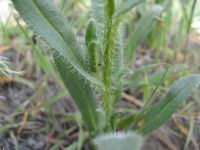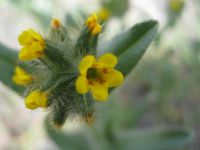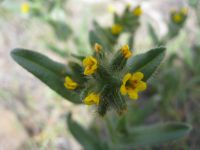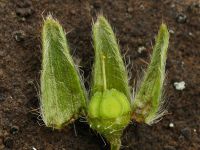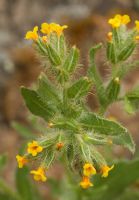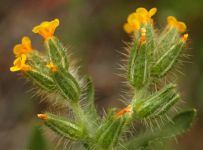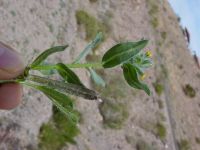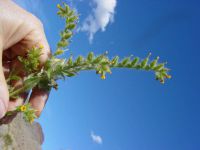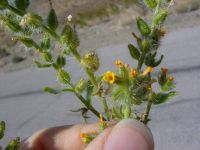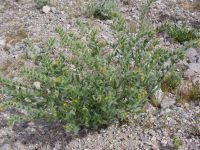Distribution: Occurring chiefly east of the Cascades crest in Washington; British Columbia to California, east to Idaho, south to New Mexico.
Habitat: Roadsides and dry, open slopes and flats, often in disturbed soil.
Flowers: April-June
Origin: Native
Growth Duration: Annual
Conservation Status: Not of concern
Pollination: Bumblebees, bees, butterflies, flies
Bristly-hairy annual from a taproot, the simple or moderately-branched stem 1.5-6 dm. tall.
Leaves alternate, entire, hairy, lance-oblong to lance-ovate, up to 10 cm. long and 1.5 cm. wide.
Inflorescence a coiled false-raceme, often with some blackish bristles; sepals 7-14 mm. long, those of many or all of the flowers reduced in number by lateral fusion, usually 4 (sometimes fewer), the broader one with 2 terminal teeth; corolla regular, 5-lobed, golden or orange, marked in the throat with vermillion, 7-12 mm. long, the limb 3-5 mm. wide; stamens 5.
Fruit of 4 nutlets, 2.5-3.5 mm. long, gray or brownish, roughened.
Publication: Proc. Amer. Acad. Arts x. 54. 1874.
-
var. tessellata – bristly amsinckia, bristly fiddleneck, tessellate fiddleneck
 Chiefly east of the Cascades in Washington; British Columbia south to California, east to Idaho, south to New Mexico.
Chiefly east of the Cascades in Washington; British Columbia south to California, east to Idaho, south to New Mexico.
PNW Herbaria: Specimen records of Amsinckia tessellata in the Consortium of Pacific Northwest Herbaria database
WA Flora Checklist: Amsinckia tessellata checklist entry
OregonFlora: Amsinckia tessellata information
E-Flora BC: Amsinckia tessellata atlas page
CalPhotos: Amsinckia tessellata photos

